I recently had the opportunity to work with the Maxfire Speedloader a bit. I have been curious about this loader for a while as it offers a somewhat novel approach to the problem of reloading a wheelgun. When Mr. DuVernay sent his package of speedloaders to me to compliment Mike’s classic speedloader article, he also enclosed a MaxFire exemplar. One of my favorite adages is, “in theory, theory and practice are the same. In practice, they’re not.” In theory this is a pretty good speedloader…
MaxFire Speedloader: In Theory
The MaxFire Speedloader is exceedingly simple. It consists of a single piece of molded plastic with no moving parts. The texture is rubbery and, for lack of a better word, grippy. The loader consists of an oversized finger-ring on the top, and tiered slots for cartridges on the bottom. So far, so good.
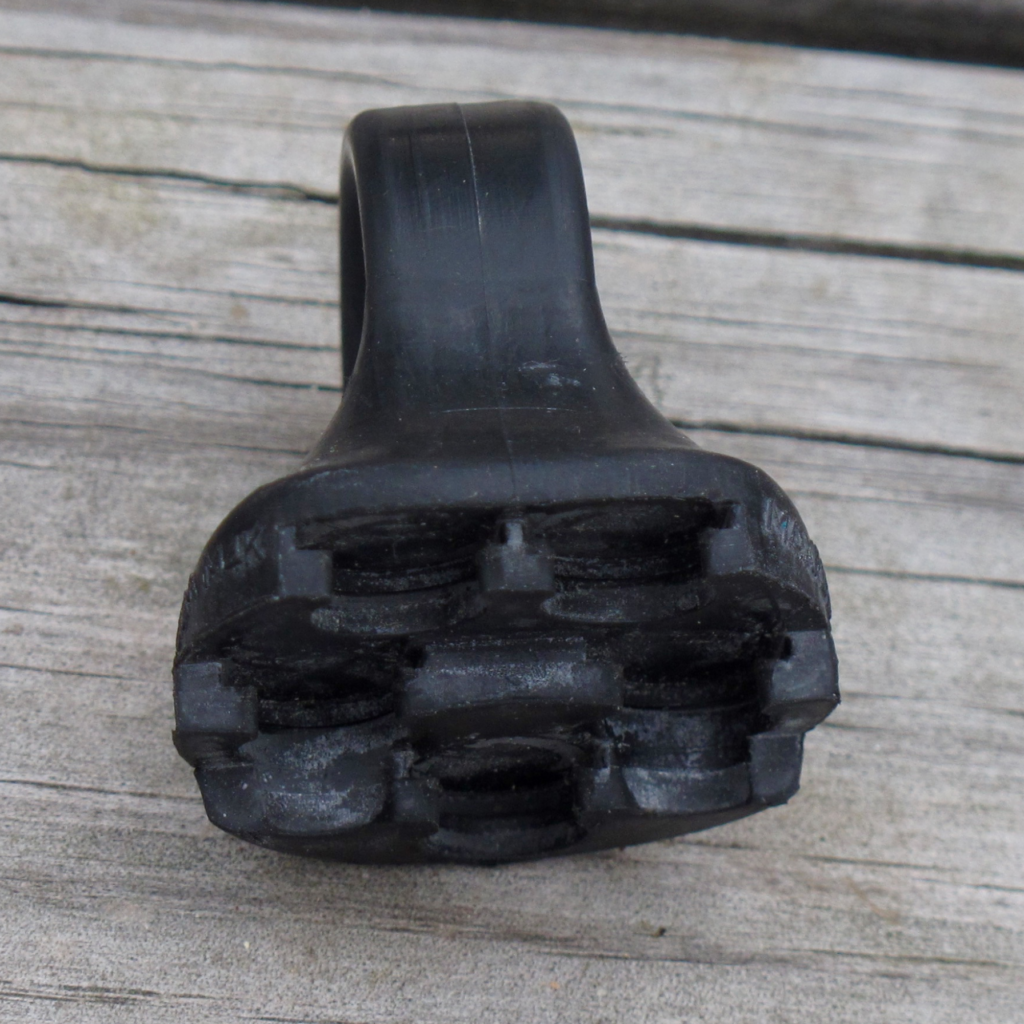
The most unique thing about the MaxFire speedloader is the way the cartridges are stacked into it. They are tiered, with the ones at the “front” sitting lower, and the ones in back higher. This creates a rather neat appearance, and I find the concept novel and interesting.
Yes, I used the terms “back” and “front”. This loader is, unfortunately, directional. To use it, one inserts the cartridges into the cylinder, ensuring the loader is oriented in the correct direction. I will give MaxFire credit where credit is due: the finger ring is helpfully directional, too. When using the MaxFire the ring should be pointed away from the gun.
Once the rounds are the in chamber and ring is pointed the right way, the loader is pulled sideways away from the gun. The cartridge rims slide out of their slots and are left in the gun, where gravity pulls them fully into the chambers. At least, that’s how it’s supposed to work…in theory.
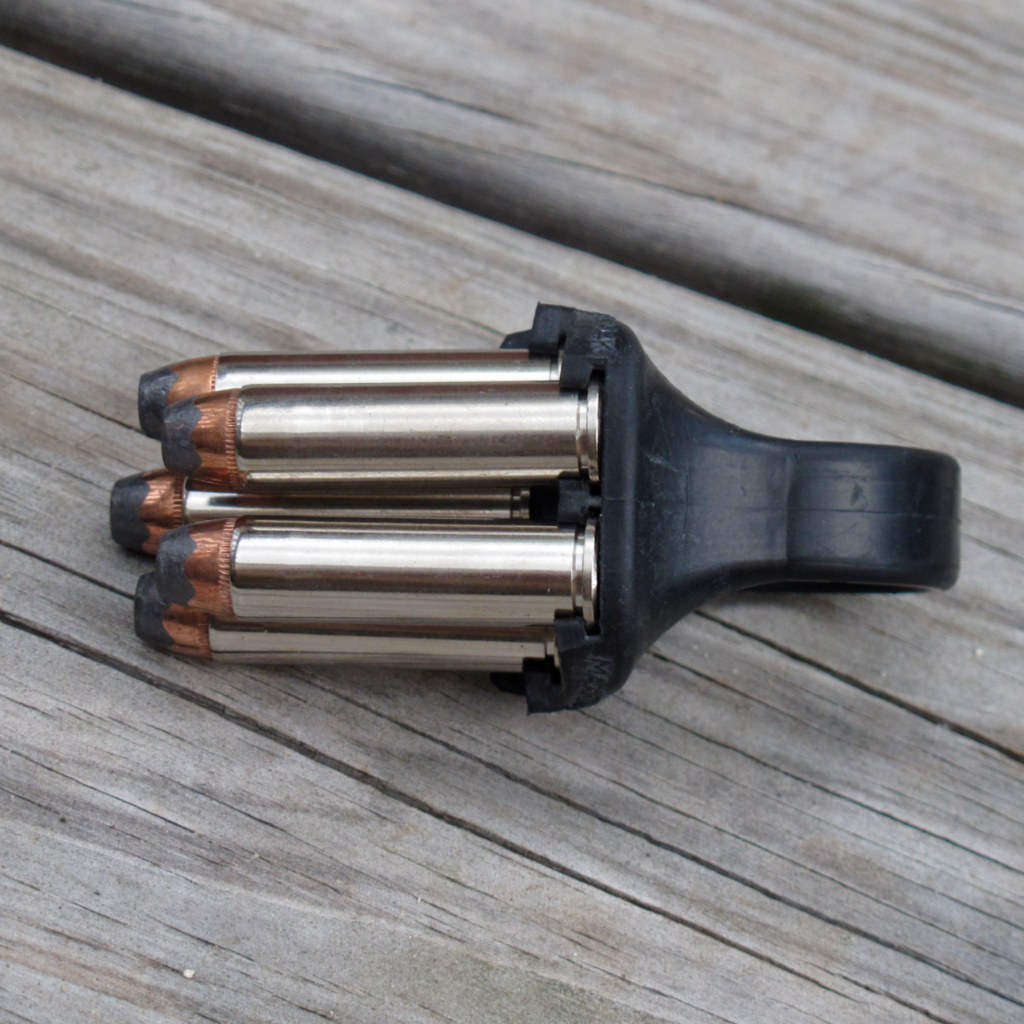
MaxFire Speedloader: In practice
In practice, I found a couple of problems with this. Getting the cartridges into the cylinder is only slightly more difficult than with any other speedloader. When aligning a speedloader I always attempt to visually focus on aligning two rounds and two charge holes on the outboard side of the cylinder. Because of the way the outboard rounds on the MaxFire speedloader are lower than the rest, alignment is a little more difficult than it should be. I could perhaps overlook this, but…
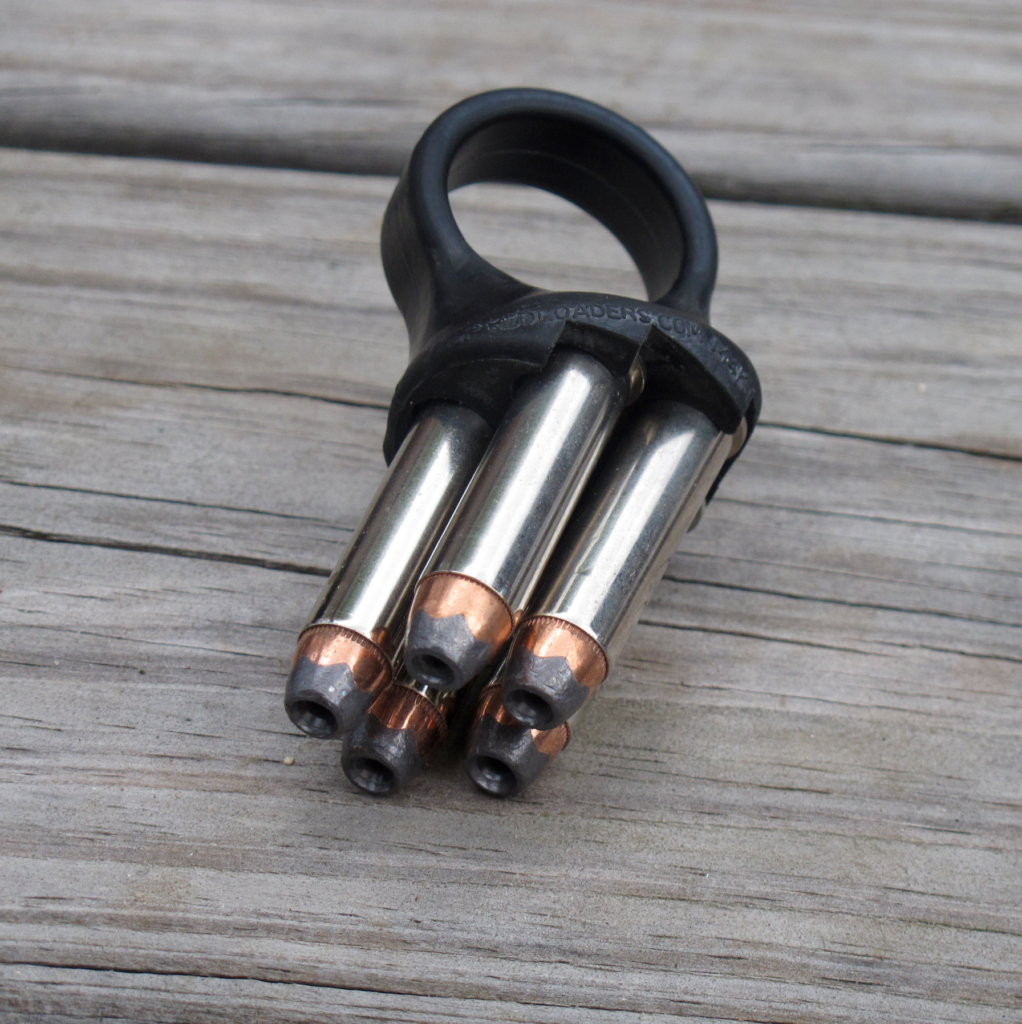
Sliding the loader off of the cartridge rims is a royal pain. The slots for the cartridges are quite tight, this being necessary to prevent them from falling off. When one tries to strip the loader off, the cumulative effect of five or six at a time make this really difficult. I found that I had to pull much harder than I was comfortable with. Grant Cunningham has even reported seeing revolvers with bent cranes from the force exerted using MaxFire loaders.
The other problem with the loader is its directional nature. I found that in controlled settings I could reliably index the loader in the correct orientation. I have some concern that after carrying these loaders for a few hours in a pouch, or a few minutes in a pocket, they may get rotated around. Even a slight rotation could change the index on the loader. This would require seating the cartridges, then rotating the whole mess (cylinder and loader) to the correct orientation. Contrast this to nearly any other speedloader design, including Speed Strips, all of which are directionally agnostic.
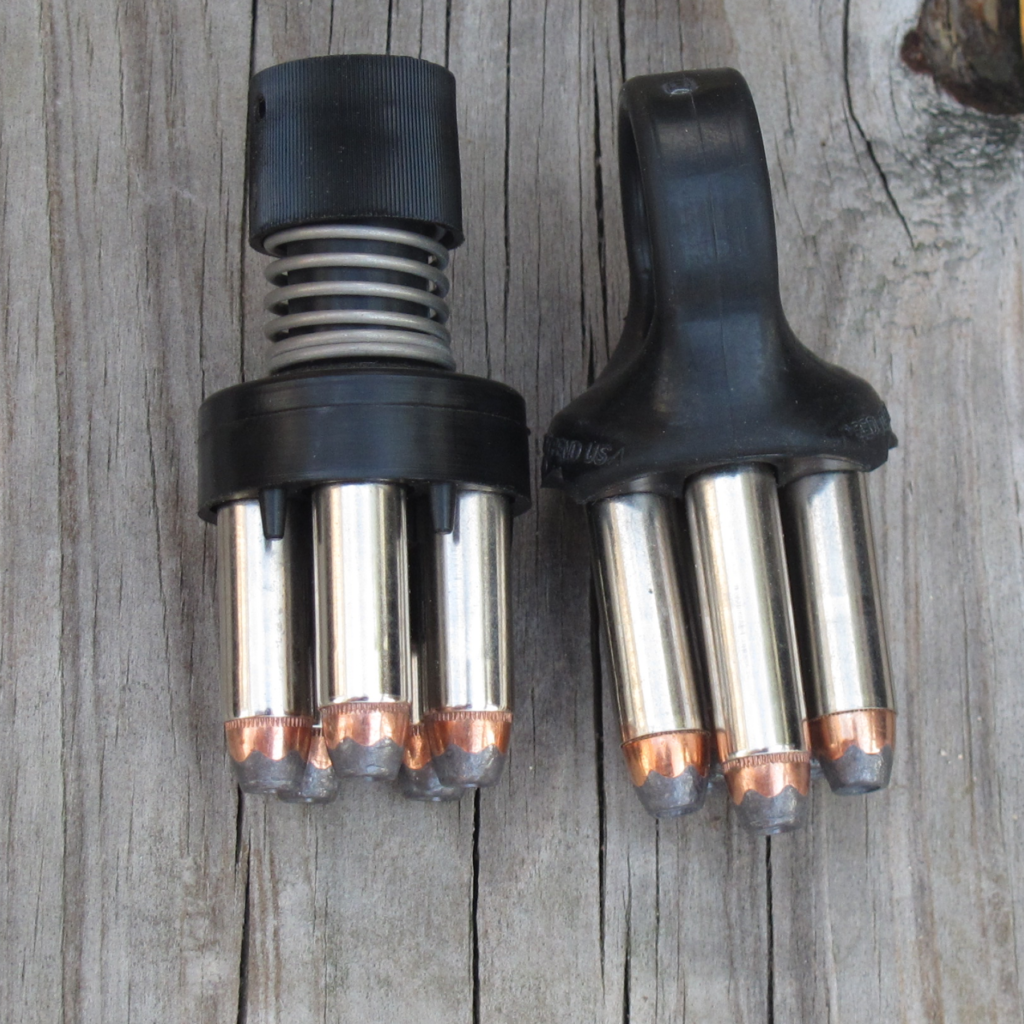
The Bottom Line
The MaxFire combines the bulk of a speedloader with all the slowness and tedium of a reloading strip. Facilitating neither a fast reload nor convenient carry, it also comes with at least a small risk of seriously damaging your revolver. I do not recommend the MaxFire for any purpose; in fact there isn’t a good thing I can say about them. You’d be much better served with an SL Variant, JetLoader, or Comp II.

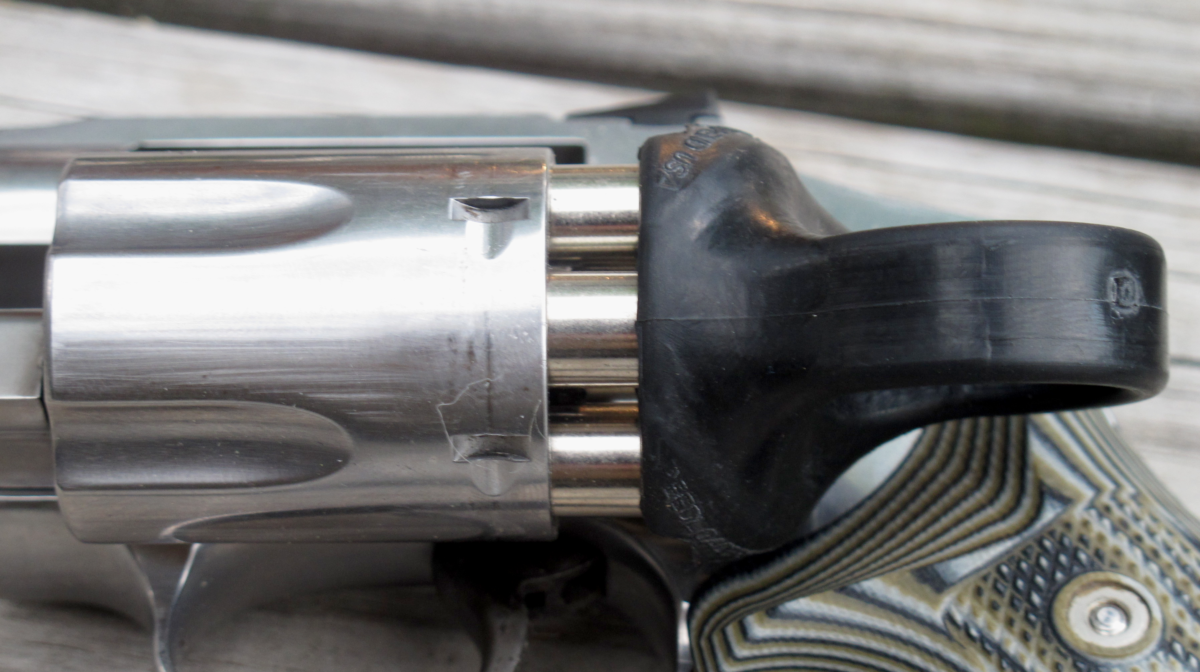
Come on, tell us what you really think!
You could maybe partially alleviate the alignment problem by loading the right (higher) side of the speedloader with .357s and the left (lower) side with .38 Special +Ps. That would sort of even everything out.
Or, you could throw the whole thing out and go with a Safariland.
On another note: In your post about the Gunsite speedloader, you never said how the cartridges get from the speedloader into the cylinder. The photos don’t show any way for the rims to get from the far side of the loader into the cylinder. Am I missing something? (I was out of town when you posted your review, and by the time I saw it, it was too late to ask on that post.)
Thanks for writing in! The Gunsite Loader is soft and you pull it off over the rims of the cartridges. It’s really hard to do without pulling the rounds out with it. Sorry we weren’t more clear on that!
Thank you for clarifying that.
I guess Colonel Jeff was too fixated on his 1911s to think the speedloader thing through. (Maybe he thought the people who bought the thing would say, “This is too hard. I’ll buy a 1911.”)
Sir, that Gunsite Training Center loader was definitely NOT a development that happened during the Colonel’s watch. It came after he sold the place. Think “Grey Gunsite,” not “Orange Gunsite.”
Calm down, or look up the definition of “humor.”
Colonel Jeff was an innovator, and all of us owe him a lot. But he’s not a sacred cow.
And I’m really not up enough on Gunsite history to know about “Grey” and “Orange.”
Could you enlighten me? (This is a serious question.)
Here’s the comment policy on RevolverGuy effectively immediately: anyone who is thinking about telling anyone else to “calm down” needs to heed their own advice, be the bigger man, and move on. I manually approve each and every comment here, and we will remain civil and polite with each other.
Well Sir, I wasn’t upset and didn’t mean to come across that way. I honestly thought you were confused about who designed it and just wanted to clarify.
The “Orange” and “Grey” terms refer to different eras of Gunsite ownership, Orange being the Jeff Cooper era and Grey being the Rich Jee era. The GTC Loader in the other article was a product of the latter. When Jee bought the operation, he changed the color scheme of the signage to grey from the traditional orange, which led to the moniker. I hope that answers your question.
Justin, some time back I attempted to get Maxfires to work as they claim to. I had NO luck at all. I even stood on one foot, closed one eye and looked at the sun, holding my mouth just so,,, and the damn thing still would not work. Frankly I am not sure how they stay in business.
Honestly, I don’t have a clue either. They are as big as a speedloader and maybe slower than a speed strip. They probably get sold to a lot of guys that don’t shoot their revolvers much(?).
For a while, MaxFire made the only 8-shot loader I was aware of. I know that there are 8-shot Tuff-Strips, and it may be that those have been around longer than the MaxFire and I simply wasn’t aware of it. Regardless, I suspect some of what keeps them in business is people buying them in the hope that they are provide speed loader functionality for 8-shot guns.
Another great point. FYI, I believe 5-Star offers 8-shot loaders. The sent me a couple of those that will be up for review pretty soon. Short answer – they’re not SLVs, but they ain’t bad.
These speed loaders seem to be the answer to the question that no one was asking. When I saw the video demonstration, I was mildly shocked at the reloading procedure and the wrist flick slamming of the cylinder back into firing position. The whole scenario just seems too oddball and unnecessary — considering the well established alternatives. Believe me, if this device was an improvement over the conventional speed loaders, I’d be the first to order a set and give them a good workout. But unfortunately, this does not appear to be the case.